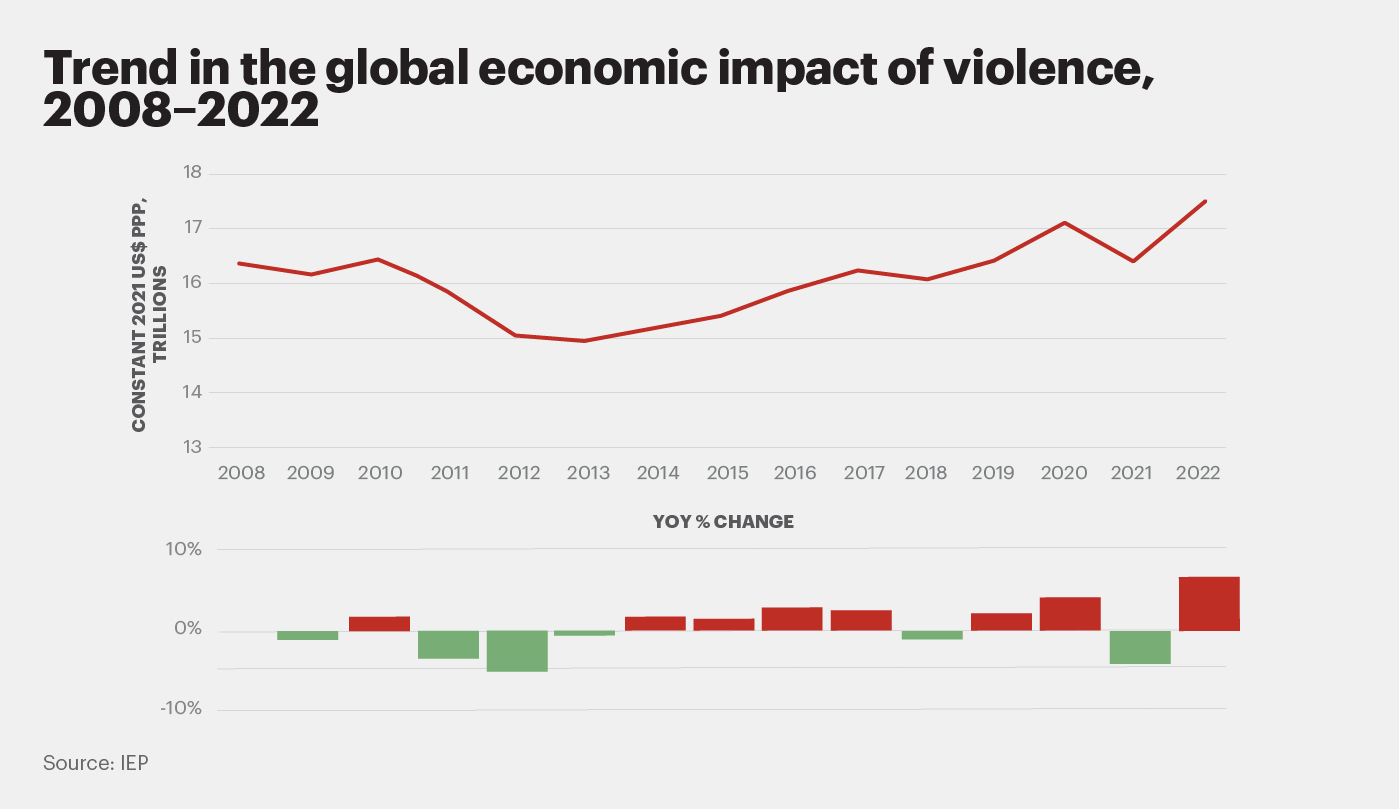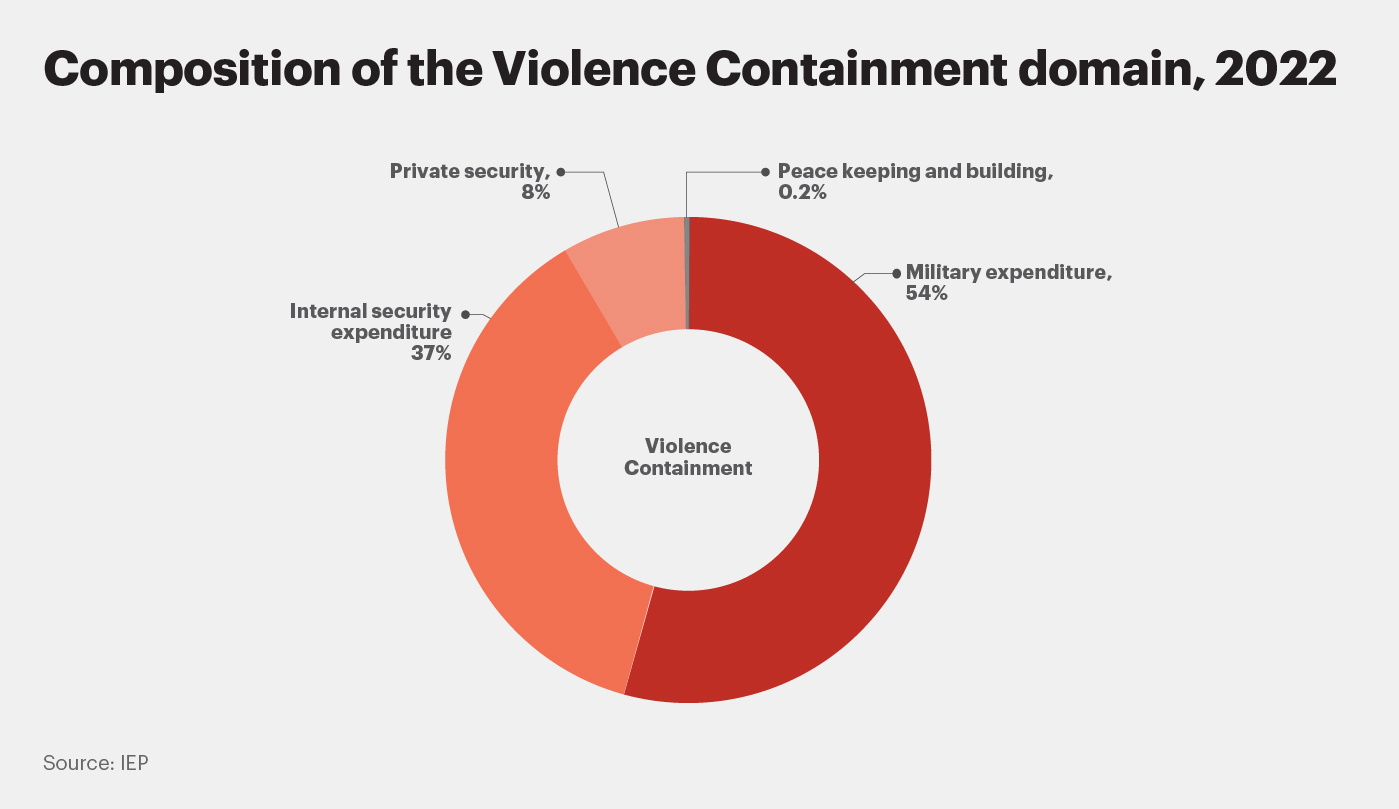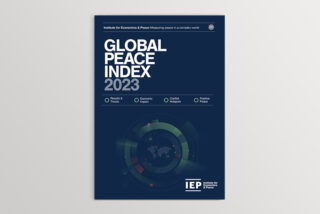In 2022, this amounted to $17.5 trillion (USD). The 2023 Global Peace Index (GPI) shows that only two recorded regions saw an improvement in their cost of violence. The overall decrease in the cost of violence in Central America & the Caribbean and sub-Saharan Africa conflicts with the remaining 6 regions that underwent an increase in their cost of violence by up to 57 per cent. The Russia & Eurasia region experienced the most extreme increase, with the Ukraine being the largest contributor due to their 2022 military expenditure ($189.4 billion [USD]).

The cost of violence can be broken into three components: direct costs, indirect costs and a multiplier effect. Whilst direct costs refer to short-term impacts of violence, indirect costs refer to the longer-term consequences that may arise such as changed perceptions of safety in society. The multiplier effect represents the economic advantages resulting from redirecting spending away from fixed costs towards more productive options.
When calculated in the GPI, the cost of violence is broken down into three domains:
The cost associated with the effect of violence on individuals falls under the umbrella costs of Interpersonal and Self-Inflicted Violence. This domain has seen growth from 2021 to 2022, with a 1.4 per cent increase for a total of $2.6 trillion (USD). Homicide accounts for almost half of the domain’s economic impact, followed by suicide, at 44 and 28 per cent respectively. This has contributed to the global increase in spending due to violence, as the ten countries with the highest economic cost of violence make up an average of 34.3 per cent of the country’s GDP.
Additional increases in the total economic impacts of violence can be found in the domain of Violence Containment, the largest and thus most expensive domain of the three. Military, internal security, and private security expenditure make up the three greatest components of Violence Containment, with military expenditure alone accounting for 54 per cent of the economic impacts of the domain. Notably, the distribution of these components varies greatly between different regions. In 2022, the impact of Violence Containment was equal to $4,485 (USD) per capita in North America, more than double the amount in Russia & Eurasia. However, this can be accounted for by North America’s high level of per capita income.

The GPI suggests that violence containment funding and strategies are economically effective when kept within an optimal level, helping prevent violence for the least amount of spending. As such, there is a need for a global emphasis upon balanced spending between different public services to ensure the most ideal spending of resources. Particularly countries such as Ukraine, Afghanistan, Sudan, North Korea, Somalia and the Central African Republic would benefit from extensive violence containment strategies as to decrease their economic cost of violence. The six countries all spend over 30% of their GDP financing the cost of violence due to high-intensity conflict.
International violence mitigation initiatives continue to be relevant in national agendas due to conflict in every region of the world. The 2023 GPI estimates that a Chinese blockade of Taiwan would lead to a drop in global economic output of USD 2.7 trillion in the first year, which would have detrimental consequences for global economic stability. As such, the reduction in the cost of violence would prove beneficial for the international community, as well as individual nations.
Global efforts to increase violence containment strategies have been fronted by the United Nations since 2015. The 2030 Agenda Reducing All Forms of Violence, focusing on international agreement on the nature of violence, national ownership, partnerships for violence reduction and due diligence1. The proposal for the agenda cited past failures of peacekeeping attempts, such as the post-election crisis in Kenya between 2007 and 2008.

Download the Global Peace Index 2023
Global Peace Index 2023